Lt. Hunter's Book Collection
These books are available to you in memory of Lt. Christopher Hunter who passed away in the Line of Duty November 15, 2014.
Lt. Hunter's collection of books was well over 60. We chose 25 of the best books to donate in the local libraries.
He was constantly reading and training to better himself and his fire department. By offering these books through your local library, the Hunter's Heroes Foundation hopes you continue to better yourself and your fire department as well. EDUCATE AND MOTIVATE!!!
Our current library locations where the following books are:
Cinnaminson Library
1619 Riverton Road
Cinnaminson, NJ 08077
Phone: 856-829-9340
County Library
5 Pioneer Boulevard
Westampton, NJ 08060
Phone: 609-267-9660
Willingboro Public Library
220 Willingboro Parkway
Willingboro Town Center
Willingboro, NJ 08046
Phone: 609-877-6668
Cherry Hill Public Library
1100 Kings Highway,
Cherry Hill, NJ 08034
Phone: 856-667-0300



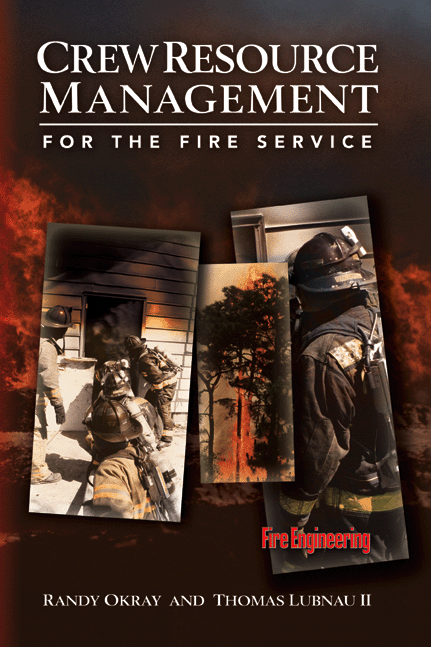

Step Up and Lead
In Step Up and Lead, Frank Viscuso—author, speaker, and career deputy
chief—shares the secrets of effective fire service leadership, introduces the traits and skills essential for successful fire service leaders, and discusses the importance of customer service.
Designed to help you reach the top of your profession, this book is considered a must-read material for anyone who is ready to step up and lead!
The Combat Position: Achieving Firefighting Readiness
Firefighting is combat and should be viewed as a warrior's calling. Firefighters put themselves in harm's way to protect others, a selflessness rooted in the same noble drive as the military warriors who defend our nation. This book about combat is meant to be a guide for those who seek to follow a warrior's path, the path of the fire service warrior.
Today's firefighter must be a warrior who will unflinchingly put his very life in harm's way to accomplish a mission, but who is also fully informed about the path being chosen. Embracing the philosophy of the fire service warrior, and striving for the ready position—the synthesis of physical and mental readiness that allows for optimum fireground performance—can reduce firefighter injuries and fatalities.
The Combat Position: Achieving Firefighter Readiness will be an invaluable tool for firefighters, company officers, chief officers, and instructors.
Ignighting the Leader Within: Inspiring, Motivating & Influencing Others
There is no lack of available material and educational programs to teach you everything you ever wanted to know about "management". The bad news is that management isn't the same as leadership. Confusing management and leadership is easy. But management is how an order is carried out. Leadership is why the order was there in the first place. You want to be a leader. This book will show you how!
Crew Resource Management:
For the Fire Service
Imagine a safer and more efficient fireground without the expense of the latest equipment or technical training. Crew Resource Management for the Fire Service aims to reduce injuries and fatalities on the fireground by preventing human error.
This book will provide fire service professionals with the necessary communication, leadership, and decision-making tools to operate safely and effectively under stressful conditions, thereby reducing injuries and deaths on the emergency scene.
Although the concept of crew resource management has been around since the 1970s, this is the first book to apply CRM to the fire service industry. CRM emphasizes that in most cases technology isnt the root cause of catastrophe—human error is the culprit. Therefore steps taken to minimize the impact of errors are the keys to reducing the magnitude of the inevitable human failing.
This book will be valuable for college classes, and may be used internationally by the fire service, emergency medical services, industrial fire brigades, technical rescue teams, and any other emergency service provider systems.
Fireground Size-Up
This book is designed to give the reader an in-depth review of 15 recognized size-up points for the different occupancies listed. In each different type of building referenced, the author covers the following: construction concerns, occupancy, apparatus and staffing, life hazard, terrain, water supply, auxiliary appliances and aides, street conditions, weather, exposures, area, location and extent of fire, time, height, and special considerations.
This book is of interest to firefighters and fire officers studying for promotional exams, current fire officers who wish to study proven information about a particular type of building and its concerns, and college and fire academies who deliver courses related to fire officer training and education.

The Engine Company
In his new book, Battalion Chief Salka, a nationally recognized speaker and author with years of service in several career and volunteer departments, looks at both the similarities and differences in the engine company operations practiced by fire departments throughout the United States and discusses in detail the equipment, staffing, and operations of engine company firefighters at structural fires and emergencies in urban, suburban, and rural settings.
In this book, Salka teaches readers: the abilities and limitations of engine companies, depending on equipment, staffing, and water supply, to execute the tactical missions of engine companies
and the importance of mastering engine company functions for successful fire attack.
The Engine Company is an invaluable resource for firefighters who want a better understanding of the functions of the engine company, and training officers and instructors.

Elevator and Escalator Rescue:
A Comprehensive Guide
Written by firefighters for firefighters, Elevator and Escalator Rescue: A Comprehensive Guidecontains important information for technical rescue members, training officers and fire company members alike. This engaging and accessible book details the risks involved in elevator and escalator rescues and how to face them successfully.
Key Features and Benefits:
-
A comprehensive guide for dealing with elevator and escalator emergencies.
-
Written by firefighters for firefighters
-
Knowledge drawn from 80 years of combined firefighting experience with elevators.
-
Coverage spanning the evolution of elevatorsfrom their most primitive stages to todays high tech innovations.
-
Chapter-ending questions to test the students' comprehension.
-
Contains an extensive glossary of elevator and escalator terminology.

From Buddy to Boss:
Effective Fire Service Leadership
Whether you're a new officer or in need of a mentor, From Buddy to Boss: Effective Fire Service Leadership is a must-have leadership/management book you'll turn to over and over again. Fire service veteran Chase Sargent has taken his popular course and written a no-holds-barred leadership book for the fire service in a conversational and easy-to-read style. He tells you how to accept and survive politics, deal with the fringe employees, and keep your cool—tricks of the trade that usually take years to acquire.
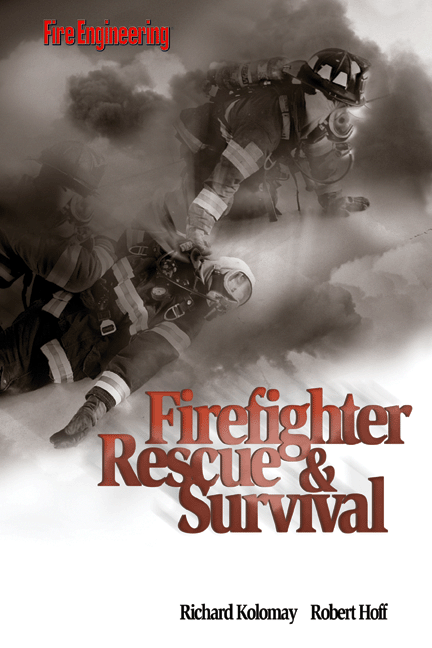
Firefighter Rescue and Survival
Deliberate training in firefigher rescue and survival is a field that is new to many in the fire service and private industry alike. For those firefighters and company officers assigned to a Rapid Intervention Team (RIT), not making the correct split-second decisions—such as immediately recognizing changes in fire behavior or failing to evaluate their level of SCBA air—can result in the loss of the lives of the entire team.
In an effort to reduce the number of line-of-duty firefighting injuries and deaths, while at the same time being proactive in the fire service training and leadership, authors Richard Kolomay and Robert Hoff have drawn upon their combined 50+ years of firefighting experience to put together this comprehensive guide.
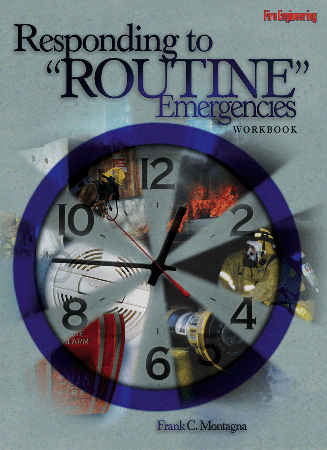
Responding to "Rountine" Emergencies
This workbook is the companion to Chief Montagna's popular book, Responding to "Routine" Emergencies. The author has developed study materials in the form of questions and scenarios that will challenge the reader to look deeper into the routine calls that all firefighters respond to so they come away with a better grasp of proper actions to take.
The materials in this workbook can be used by an individual or within a group as part of an interactive company drill. Regardless of how this is used, the reader will benefit from gaining a better knowledge of dealing with routine emergencies that the fire service comes face to face with every day. Each study question is referenced back to lessons from the original text. The scenarios are written so that firefighters can relate to the situations and see themselves. The lessons are timeless for any member of the fire service from the biggest city to the smallest village.

Brannigan's Building Construction for the Fire Service
For over forty years, Brannigan’s Building Construction of the Fire Service has been the fire service’s most trusted and comprehensive building construction resource available. Now in its Fifth Edition, this bestselling resource continues to honor Frank Brannigan’s legacy by continuing his passion for detail and extensive practical experience. His motto, “Know your buildings,” impacts every aspect of this text. This Fifth Edition now features: Coverage of the National Fire Academy’s Fire and Emergency Services in Higher Education (FESHE) Building Construction for Fire Protection course objectives. New stand-alone chapter on New, Light, Green (Solar), and Modular Construction. Enhanced emphasis on tactical considerations found throughout the text. Trust Brannigan’s Building Construction of the Fire Service to provide straightforward information on different building types and their unique hazards needed to keep fire fighters safe on the job.

Incident Management for the Street-Smart Fire Officer
In the second edition of Incident Management for the Street-Smart Fire Officer, author Skip Coleman expands on the mindset and tactics necessary to manage the fireground with more control and less chaos.
Incident management system (IMS) is a tool that defines the role and responsibilities of each fire department member, allowing crew members to function quickly and efficiently upon arrival at the fireground—all the while meeting the commanders expectations. Regardless of the size or geographic location of fire department, an IMS is one of the most practical innovations available that yields measurable results.
The days of chief officers pulling up to a fire and allowing the fire to run them are over. Incident management makes thinkers out of commanders.

25 to Survive:
Reducing Injury and LODD
Two seasoned fire officers take an in-depth look into the causes of line of duty deaths in residential building fires, and offer incident recommendations. This book is designed to provide firefighters and fire officers street proven tips, techniques, and company-level drills that address and overcome the 25 most common errors that occur at residential building fires.

Truck Company Operations
Author John Mittendorf has completely rewritten his best-selling book, Truck Company Operations, a must-have for all firefighters who are assigned to the truck and who have responsibilities for the truck on the fireground.
The new second edition covers the many aspects, tasks, and functions of a truck company, and contains new and expanded information related to search, reading a building, reading smoke, the Ten Commandments of truck company operations, operating truck apparatus, and moreall from a truck company perspective.

Fireground Operational Guides
This important book is designed to serve many purposes in the fire service, ranging from being a starting point and refresher guide for firefighters seeking promotions at any level, to being a field operational guide for on-scene Incident Commanders and Company Officers. It offers an easy-to-follow, step-by-step action plan for firefighters working in Acting Capacities, and can be used when developing SOPs, and when organizing and planning training evolutions.
Deputy Chiefs Viscuso and Terpak introduce you to their Universal Tactical Worksheet for Structure Fires (UTW) and teach you how to use it to achieve maximum results. Following the UTW are 70 incident-specific operational guides, listing the essential steps required when responding to a specific type of incident.
Well-researched, practiced, and prepared, the UTW and operational guides will assist you through an entire incident, from the initial call until reports have been completed. To make them your own, printable versions are provided on the CD included with the book. Having these operational guides at an incident is like having a team of highly-educated chief officers standing next to you, offering tips to help you safely and effectively mitigate a situation. This is definitely a book every firefighter, officer, and aspiring officer will want to own!

First In, Last Out:
Leadership Lessons from the NYFD
What does it take to lead people into a burning building? How do the leaders of the New York City Fire Department develop so much loyalty, trust, and grace under pressure that their subordinates will risk their very lives for them?
As a high-ranking officer of the FDNY, John Salka is an expert at both practicing and teaching high-stakes leadership. In First In, Last Out, he explains the department’s unique strategies and how they can be adopted by leaders in any field—as
he has taught them to organizations around the country. In a tough-talking, no-nonsense style, Salka uses real-world stories to convey leadership imperatives such as: first in, last out—your people need to see you taking the biggest risk, as the first one to
-
enter the danger zone and the last to leave
-
manage change—the fire you fought yesterday is not the one you’ll be fighting tomorrow
-
communicate aggressively—a working radio is worth more than 20,000 gallons of water
-
create an execution culture—focus your people on the flames, not the smoke
-
commit to reality—never allow the way you would like things to be to color how things are
-
develop your people—let them feel a little heat today or they’ll get burned tomorrow
-
Illustrated by harrowing real-life situations, the principles in First In, Last Out will help managers become more confident, coherent, and commanding.

Failure Point:
How to Determine Burning Building Safety
In his book, author Howard J. Hill describes building construction features and how to recognize collapse dangers for all types of buildings and construction methods.
The book contains a wealth of useful information, including discussions about:
-
key elements that warn of imminent fire-induced collapse
-
how to prevent injuries to operating personnel
-
adapting risk/benefit techniques to manage firefighting personnel on the fireground
-
how building codes affect fire-induced building collapses
-
and much more!
Failure Point is an important resource for chief officers, company officers, firefighters, and code officials. It meets Fire and Emergency Services Higher Education (FESHE) requirements for the Building Construction for Fire Protection course.

Suburban Fire Tactics
Suburban Fire Tactics is a guide for suburban-based fire operations.
All fire departments share the same common objectives: to save lives, protect and conserve property, and limit harm to the environment. How urban, rural, and suburban agencies differ is in the delivery of tactics and strategies. This book explains the factors that limit suburban operations and depicts the differences between urban and suburban capabilities.
This is a valuable resource for policymakers, chief officers, company officers, and firefighters (both veteran and neophyte).
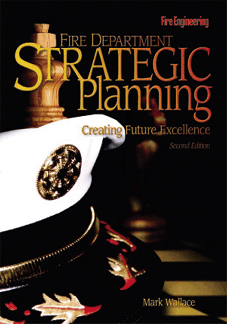
Fire Department Stratigic Planning Creating Future Excellence
Successful fire service leaders know that a fire department that isn't moving forward is dying or, at least, in danger of dying. In this second edition, author Mark Wallace succinctly points out that if you don't know where you're going, any road will take you there. Fire departments that know where they are going, know the environment in which they must operate, and have identified how to get there have the best chance of achieving their goals and desires. These concepts form the foundation of strategic planning. They challenge fire chiefs to escape from the typical operational thinking, to begin strategic thinking, and ultimately to manage their organizations strategically.
In Fire Department Strategic Planning, 2nd Editionreaders will learn about the strategic planning process and why each of the steps in the process is critical if the plan is to succeed. More importantly, while the strategic planning process may be thought of as extremely complicated this book remove the mystery by providing timely advice and easy to use tools to assist in the strategic planning process that can be applied to any fire department.

Vehicle Extrication:
A Practical Guide
Extricating trapped victims from vehicles is the most common type of rescue performed by firefighters. By mastering the basic tools used in extrication, departments of all types can increase their effectiveness at the rescue scene.
In this book, author Brian G. Anderson presents an all-inclusive guide to vehicle extrication covering:
-
Scene management
-
Tool design, operation, and maintenance
-
Step-by-step illustrated procedures using: hand tools, electric tools, hydraulic tools, and pneumatic tools
-
Procedures for automobiles, trucks, and buses
-
Overview of wreckers
The extensive use of pictures and detailed descriptions used in Vehicle Extrication: A Practical Guide are sure to make this book an industry standard for training firefighters and other first responders.

Five Alarm Leadership:
From Firehouse to Fireground
Rick Lasky and John Salka are two of the most dynamic and inspirational leaders in the fire service.
Their book, Five Alarm Leadership, is a compilation of leadership lessons learned, situations handled, decisions made, and problems solved during their combined 60-plus years of fire service experience. Also included is a special introduction by Chief (ret.) Bobby Halton, Editor-in-Chief of Fire Engineering magazine, outlining the nature of transformational leadership and its power to inspire excellence in the fire service.

Collapse of Burning Buildings:
A Guide to Fireground Safety
Learn how to protect yourself from collapse by understanding why it occurs and the signs that lead to it. Chief Dunn reviews general building design and construction methods, along with the types of collapses that may occur. He also documents hazards that occur with master stream operations and buildings under construction.
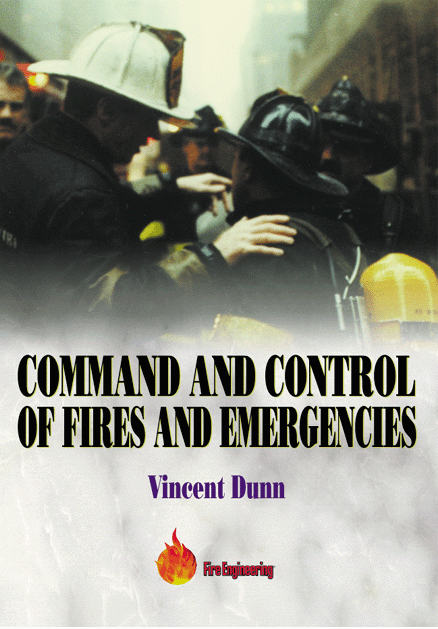
Command & Control of Fire and Emergencies
-
Learn about command presence
-
Develop a fireground strategy
A busy fire officer handles numerous tasks: administration, budgets, political interaction, medical response, fire prevention, inspections, etc. This book brings the active fire officer back to his job's focus: Fighting fires and responding to emergencies.

Fire Officer's Handbook of Tactics
John Norman has updated his best-selling book, a guide for the firefighter and fire officer who, having learned the basic mechanics of the trade, are looking for specific methods for handling specific situations.
In this new fourth edition, readers will find a new chapter on lightweight construction, a new chapter on electrical fires and emergencies, updates to many chapters including such topics as wind-driven fires, and many new illustrations.

Pride & Ownership:
A Firefighter's Love of the Job
In this thought-provoking and inspirational session from FDIC 2001, Chief Rick Lasky gives an upfront and honest criticism about the need to reignite the love of the job on every level, from chiefs and on down.
Learn what you can do to drive your members to take pride in their job and assume ownership.
.
